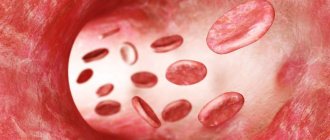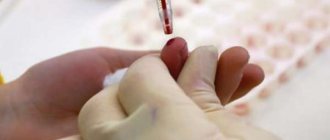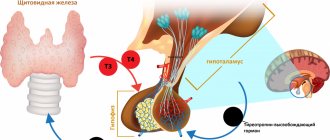From this article you will learn:
- What kind of analysis is this - blood hemogram
- How is a general blood test performed and a hemogram drawn up?
- How to decipher a blood hemogram: a table of normal indicators in an adult
- What do changes in blood parameters indicate?
- Blood hemogram indicators in children
A blood hemogram is one of the most common and simple tests that each of us encounters quite regularly. With the help of this study, you can obtain reliable information about the composition of the blood, making timely diagnosis of inflammation, the risk of anemia, etc. possible.
Essentially, a hemogram is a general blood test. Its decoding is a table that includes indicators of the levels of various blood components, etc. People who are far from medicine are often interested in how to interpret the values given in it. Let's figure out together what this research is.
Blood hemogram - what kind of analysis is it?
It is carried out for the purpose of:
- Detection of anemia, leukemia, lymphoma.
- Diagnosis of bleeding and bleeding disorders.
- Detection of viral and bacterial infections.
- Detection of polycythemia vera (polycythemia vera).
- Studies of lymphadenopathy (enlarged lymph nodes).
- Detection of various allergies.
- Analysis of splenomegaly (enlarged spleen)
.
- Detection of thalassemia.
- Monitoring the treatment of liver diseases.
Currently, venous blood is an ideal material for this type of research. What is this - a blood hemogram? This is a quantitative and qualitative analysis of individual blood structures (erythrocytes, leukocytes, platelets, etc.).
What does a blood hemogram show:
- This examination method makes it possible to identify the nature of the occurrence of certain symptoms of pathology after a specialist has studied the patient’s medical history and physical examination.
- In order to monitor changes in blood counts during chemotherapy.
When to do this analysis:
- After injuries accompanied by internal and/or external bleeding.
- In case of malaise, fatigue, bleeding, bone pain, swelling of the lymph nodes, infection, etc.
- At the preparatory stage before surgery.
- To assess the quality of blood after transfusions.
Decoding a blood hemogram provides information not only about the number of cells. It can also indicate the physical characteristics of some of them, which helps the doctor make an accurate diagnosis.
There are cases when the analysis indicators do not change even in the presence of any disease.
Medical laboratory research methods
Laboratory-instrumental method
This method is a set of methods for conducting research, the ultimate goal of which is diagnosing various diseases. The method includes:
- Immunological research method.
Necessary for studying immune parameters. It is often used for patients with allergies, chronic manifestations of respiratory diseases and when the presence of neoplasms is suspected. - Hormonal study.
Used for diagnosis and analysis of the endocrine system, as well as diseases caused by hormonal imbalance. - Propensity testing.
Allows you to assess your predisposition to certain types of diseases or bad habits, and identify problems in metabolic processes. - Method for diagnosing infectious diseases.
Essential for detecting infections.
Clinical and laboratory method
It is a set of experimental activities and tests conducted with the direct participation of patients. Clinical and laboratory research makes it possible to analyze the effectiveness of drugs or treatment methods. It is mainly used to detect side effects of drugs and medicines that have not yet been released into mass circulation.
Laboratory blood test
This method allows you to accurately determine even the slightest deviations in the functioning of all organs and systems of the patient. The method includes:
- General analysis.
By collecting venous blood, it allows you to study the levels of platelets, leukocytes, hemoglobin, etc. - Biochemistry.
Otherwise called biochemical analysis, the technique allows you to assess the state of hormone levels. Its results make it possible to determine the presence or predisposition to hormonal imbalances, which can result in serious consequences: infertility, mental retardation, etc.
Kidney laboratory tests
Among the laboratory methods for studying the kidneys are the following:
- X-ray.
This research method makes it possible to conduct a comprehensive assessment of the size, outline, and also detect the presence of stones and traces of neoplasms. - Ultrasound research method.
Allows you to evaluate the shape and size of the kidneys, detect tumors, stones or cavities. Also, using ultrasound, it is possible to assess the functionality of the blood flow. - Radioisotope research.
It is most often carried out to study and evaluate the functionality of the patient’s kidneys, bladder and genitourinary tract. - Puncture biopsy method.
This technique is necessary for studying and assessing the stage of tumor development. The results of the study help to give an accurate prognosis of development and growth, as well as determine the prospects for treatment.
How is a general blood test performed and a hemogram drawn up?
How to donate a blood hemogram:
- It is determined from which vein the blood will be drawn.
- The elbow bend is treated with a swab moistened with an antiseptic.
- A not too tight tourniquet is applied to the arm just below the shoulder. You cannot tighten a limb for a long time.
- A vein is punctured.
- The required volume of blood is taken into a tube with EDTA.
- EDTA (ethylenediaminetetraacetic acid) is an anticoagulant needed to keep the blood fluid and not clot. The sample is then moved slowly around the tube several times.
- The material is sent to the laboratory.
The blood sample is examined in a special device called a hematology analyzer. The transcript of a blood test (hemogram) is a table containing the names of indicators, units of measurement, norms and actually detected deviations in the composition of the blood. They are identified by special markings or color changes.
The test results do not indicate diagnoses. It is transferred to the attending physician to make a final verdict (in conjunction with other studies, the patient’s complaints and his physical examination), since conclusions cannot be drawn only on the basis of the hemogram.
Types of laboratory tests in medicine
Analyzes are classified according to the types of materials taken for them. Based on this, the following stands out:
- Blood analysis.
It is the most important of all laboratory tests. Allows you to identify any stages of deviations and changes in human organs and systems. It is divided into general and biochemical analyses. - Analysis of urine.
This type of research is used primarily for diagnosing diseases of the genitourinary tract and organs, even at their initial stage. - Stool analysis.
This type of laboratory test allows us to identify dysfunctions of the stomach, intestines, and digestive tract. According to the analysis, you can determine the presence of inflammation of the gastrointestinal tract, liver or gallbladder, as well as find out whether parasites are present in the body. - Microbiology.
Otherwise called microbiological analysis, it allows you to detect harmful microscopic organisms. - Histology.
Histological analysis allows you to detect malignant or benign oncological tumors. It is divided into microscopic and cultural methods. - Cytological analysis.
It is a type of laboratory test that allows you to diagnose neoplasms.
Decoding the blood hemogram: table of normal indicators for an adult
- Erythrocytes are red blood cells that have a biconcave shape, small size and elasticity and ensure the passage of particles even in the narrowest capillaries. Their main function is to transport oxygen from the lungs to all organs and tissues of the body.
- Leukocytes are white blood cells that protect against infections, viruses and allergens. In addition, they “free” the body from cellular decay products.
- Platelets are the smallest cells that do not have a nucleus or color. This is one of the most important elements of blood, which is responsible for clotting. When the skin or organ tissue is damaged, platelets immediately “clog” the hole, forming a clot.
- Reticulocytes are “embryos” of red blood cells, capable of transforming into an adult cell under the influence of a special hormone.
- Eosinophils, basophils and neutrophils are types of white blood cells that perform a protective function against various types of bacteria and infections.
- Monocytes are large oval blood cells from the group of leukocytes with one nucleus. They do not contain granules (they are agranulocytes).
- Lymphocytes are a type of white blood cell. They are the main cells of the immune system, providing humoral (production of antibodies) and cellular (contact interaction with victim cells) immunity.
- Hemoglobin is a blood pigment, the main component of red blood cells. Its main function is to transport oxygen from the lungs to organs and tissues and remove carbon dioxide.
- Hematocrit is the ratio of plasma to formed elements, which allows us to determine the ability of blood to transport oxygen.
- ESR (erythrocyte sedimentation rate) allows you to estimate the ratio of plasma protein fractions.
- The color indicator of blood is the degree of saturation of red blood cells with hemoglobin.
Blood hemogram - interpretation in adults:
| Index | Norm |
| Red blood cells (RBC) | 4.3–6.2 x 1012/l – for men 3.8–5.5 x 1012/l – for women |
| Hemoglobin (HGB, Hb) | 120–140 g/l |
| Hematocrit (HCT) | 39–49% – for men 35–45% – for women |
| Red blood cell distribution width (RDWc) | 11,5–14,5 % |
| Mean erythrocyte volume (MCV) | 80–100 fl |
| Average hemoglobin content in erythrocytes (MCH) | 26–34 pg |
| Mean erythrocyte hemoglobin concentration (MCHC) | 30–370 g/l (g/l) |
| Platelets (PLT) | 180–320 x 109/l |
| White blood cells (WBC) | 4.0–9.0 x 109/l |
| Lymphocytes (LYM), % | LY% 25–40% LYM# 1.2–3.0 x 109/L (or 1.2–63.0 x 103/µL) |
| Content of a mixture of monocytes, eosinophils, basophils and immature cells (MID, MXD) | MID# (MID, MXD#) 0.2–0.8 x 109/l MID% (MXD%) 5–10% |
| Granulocytes (GRA, GRAN) | GRA# 1.2–6.8 x 109/L (or 1.2–6.8 x 103/µL) GRA% 47–72% |
| Monocytes (MON) | MON% 4–10% MON# 0.1-0.7 x 109/l (or 0.1–0.7 x 103/µl) |
| Erythrocyte sedimentation rate, ESR, ESR | Up to 10 mm/h for men Up to 15 mm/h for women |
Different laboratories may indicate different norms in the hemogram decoding forms. This is due to different methods for calculating parameters. Then the results should be interpreted based on the given standards.
Circumstances under which blood counts may change:
- Functional disorders in the human body that adversely affect the hematopoietic system.
- Bone marrow defects.
- Acute and chronic illnesses.
- Negative effects on blood cells outside the bone marrow.
A blood hemogram can be performed to prevent latent or indolent diseases, to confirm or refute a previously made diagnosis, to track the dynamics of the development of an already detected disease.
Recommended articles on the topic:
- How to massage the abdomen for weight loss: different techniques for health and beauty
- Stone massage: description, benefits, methods
- MRI of three parts of the spine: when is it necessary and what are the features of the procedure
What do changes in blood parameters indicate?
Deviation of the blood hemogram from the norm in the table:
- A reduced level of hemoglobin is observed in anemia, leukemia, severe blood loss, pregnancy, congenital diseases of the circulatory system, and lack of iron and vitamins.
- Hemoglobin increases with congenital pathologies of the heart or lungs and their insufficiency, while at altitude, with dehydration caused by impaired renal function, diabetes mellitus and diabetes insipidus, vomiting or diarrhea, low fluid intake or heavy sweating.
- An increased level of leukocytes is observed in cases of cancer, purulent-inflammatory processes, burns or other injuries during which the soft tissues of the body are damaged.
- An increased number of lymphocytes indicates infection with any viruses, and neutrophils indicate bacterial infections. Eosinophils are considered to be markers of parasitic infestations and allergic reactions.
- An increased number of platelets occurs in chronic inflammatory diseases (tuberculosis, ulcerative colitis, cirrhosis of the liver), after operations, treatment with hormones, in some types of cancer, and iron deficiency anemia.
- A decrease in the number of platelets indicates heavy metal poisoning, blood diseases, kidney failure, pathologies of the liver, spleen, and hormonal disorders.
In addition, most drugs affect the results of laboratory tests of the above indicators.
We recommend
Therapeutic massage for the back: features, indications and contraindications Read more
Reasons that may affect the tests:
- The tourniquet was applied incorrectly when drawing blood or the application time was exceeded.
- Shaking the test tube.
- Insufficient amount of blood taken for testing.
- Mixed-up tubes with samples from different patients.
- The test tube filling standards were not met.
- Long-term storage of the collected blood sample.
- Biochemical parameters are disturbed.
- Blood is taken after the transfusion procedure.
- Technical failure of the equipment.
If the decoding of the hemogram does not correspond to the patient’s complaints and the results of the physical examination performed by the doctor, then an extended study is prescribed.
Can a blood test be wrong?
Every year, scientists improve diagnostic methods, increasing accuracy and efficiency. However, the likelihood that the test will give a false result, and the deviations found will not be confirmed after a few days, is high. What can affect the accuracy of the examination?
Firstly, most Russian hospitals do not receive modern equipment. And the “outdated” (both morally and physically) Soviet technology, although “made to last,” cannot ensure accuracy. After all, in the 30 years since the collapse of the USSR, the scientific community has managed to demonstrate amazing progress, increasing reliability, while reducing the cost to the point of impossibility.
Secondly, 70% of errors occur due to the “deplorable” state of public hospitals and the negligence of doctors and nurses. The lack of a stable temperature regime, violation of the rules for storing and transporting samples entails changes in the composition of the blood, resulting in a sharp decrease or deviation of indicators from the established norm.
Thirdly, as was written earlier, everything that happens to the body affects the composition of the blood. Hormonal imbalances, disorders, food poisoning, menstrual periods in women, taking medications - all this is reflected in the results of the study and can give a false positive or false negative diagnosis, causing serious panic in the patient.
In other words, if you need a general analysis, contact a modern laboratory or equipped clinic. A competent specialist is obliged to collect anamnesis and ask whether you have taken any medications. Modern clinics are able to inform patients via SMS or send them via email, which eliminates kilometer-long queues at the reception desk. In fact, the accuracy of tests performed in specialized centers turns out to be much higher than similar procedures performed by a doctor at a public clinic.









